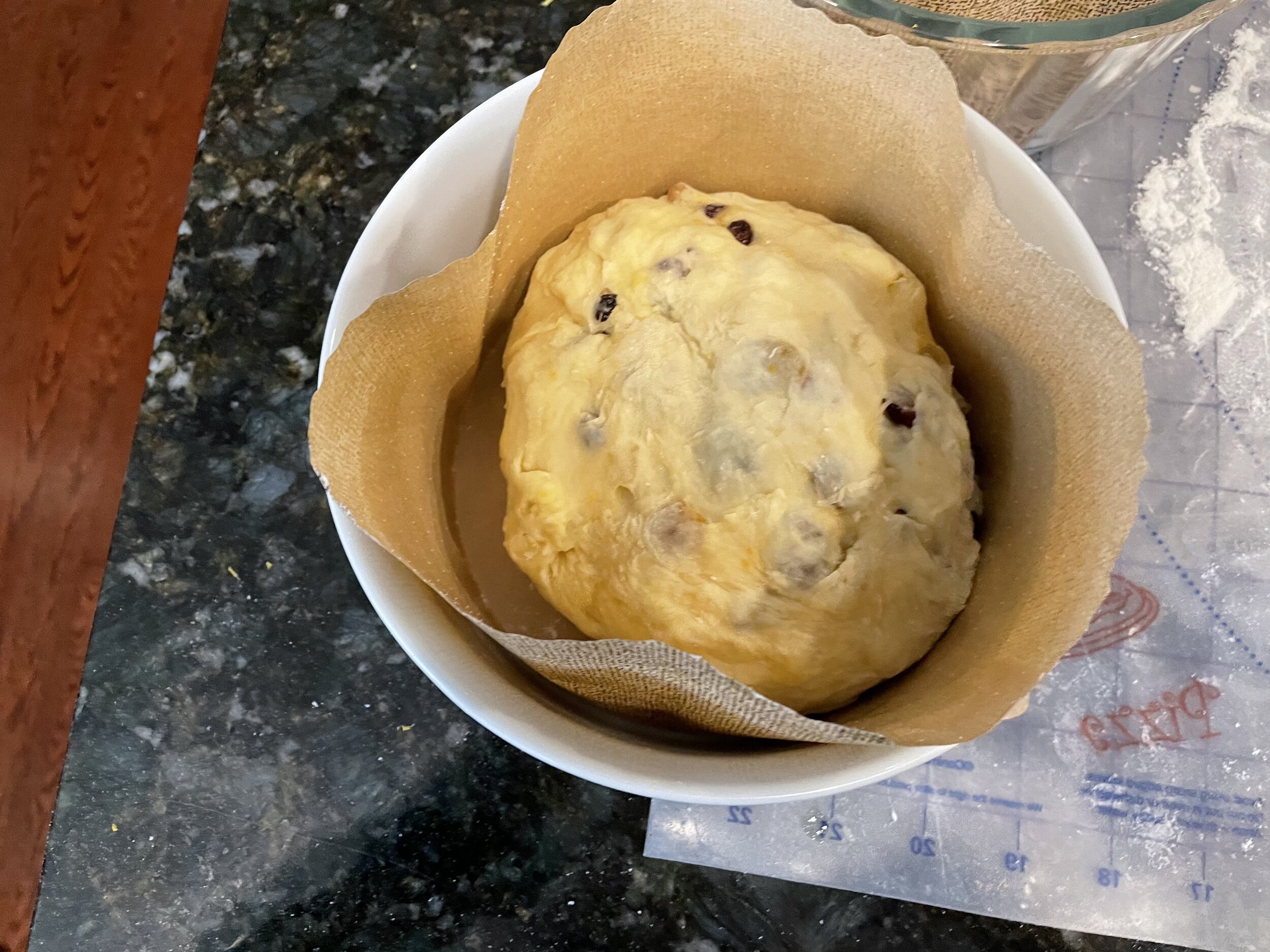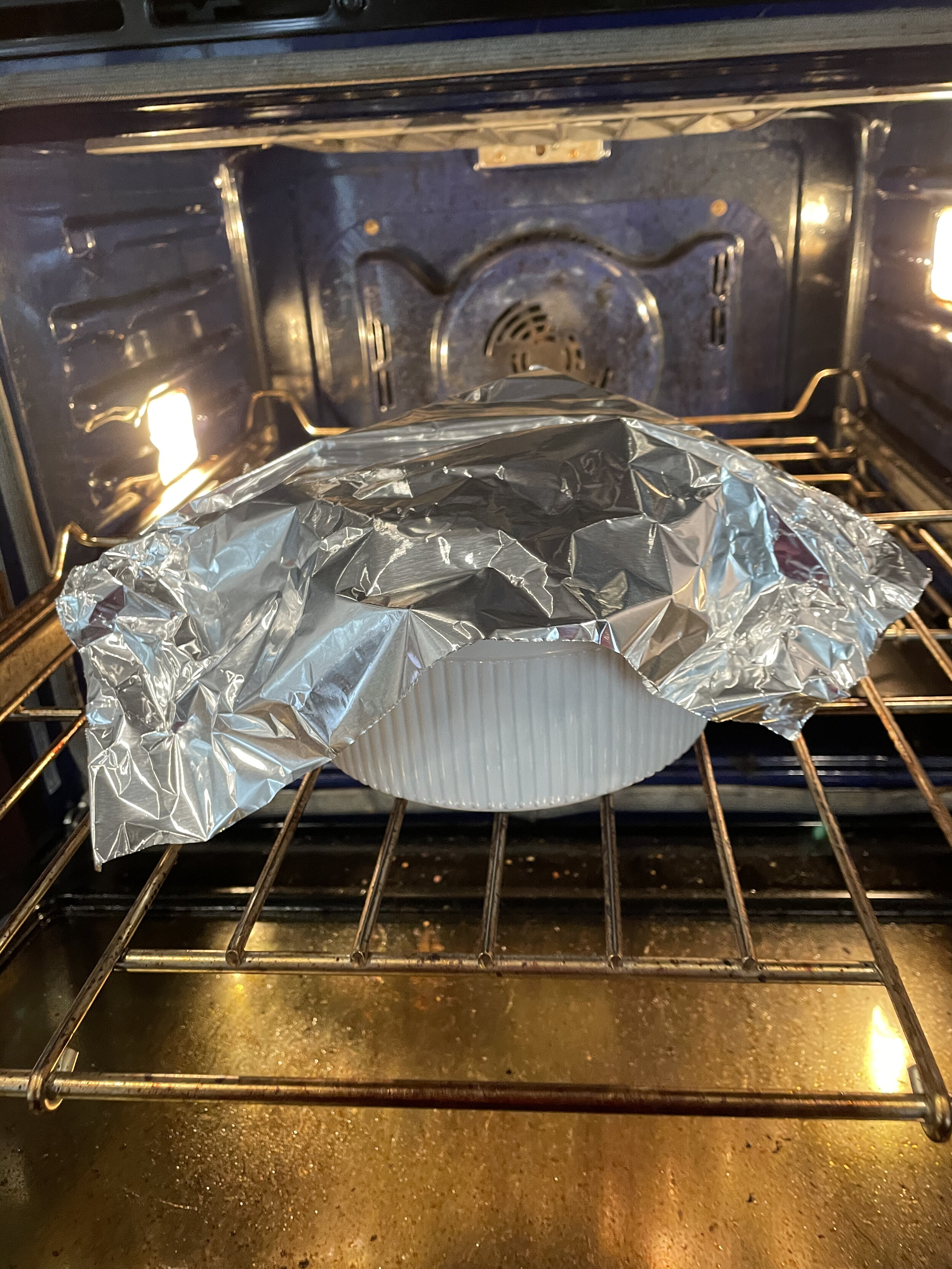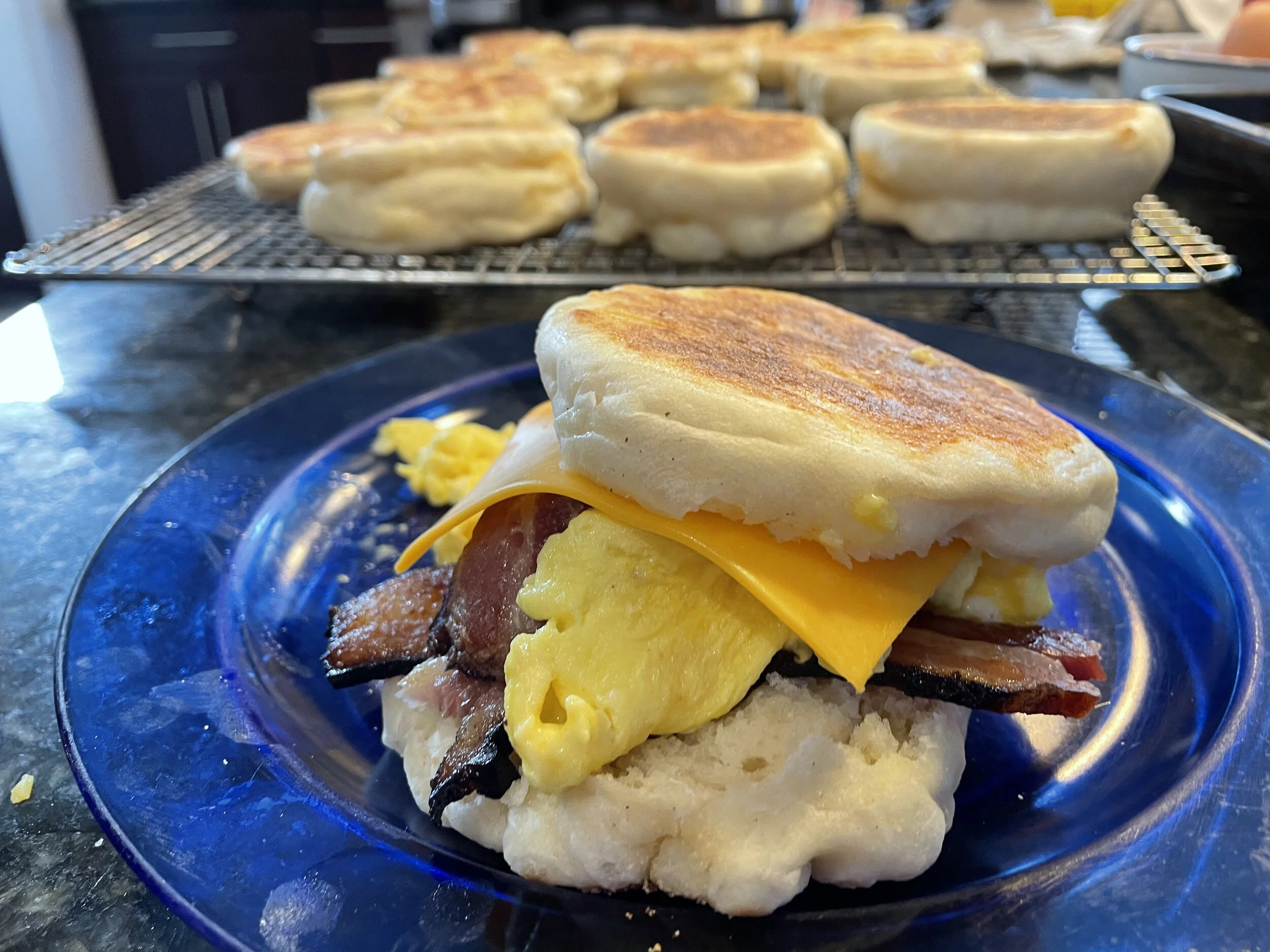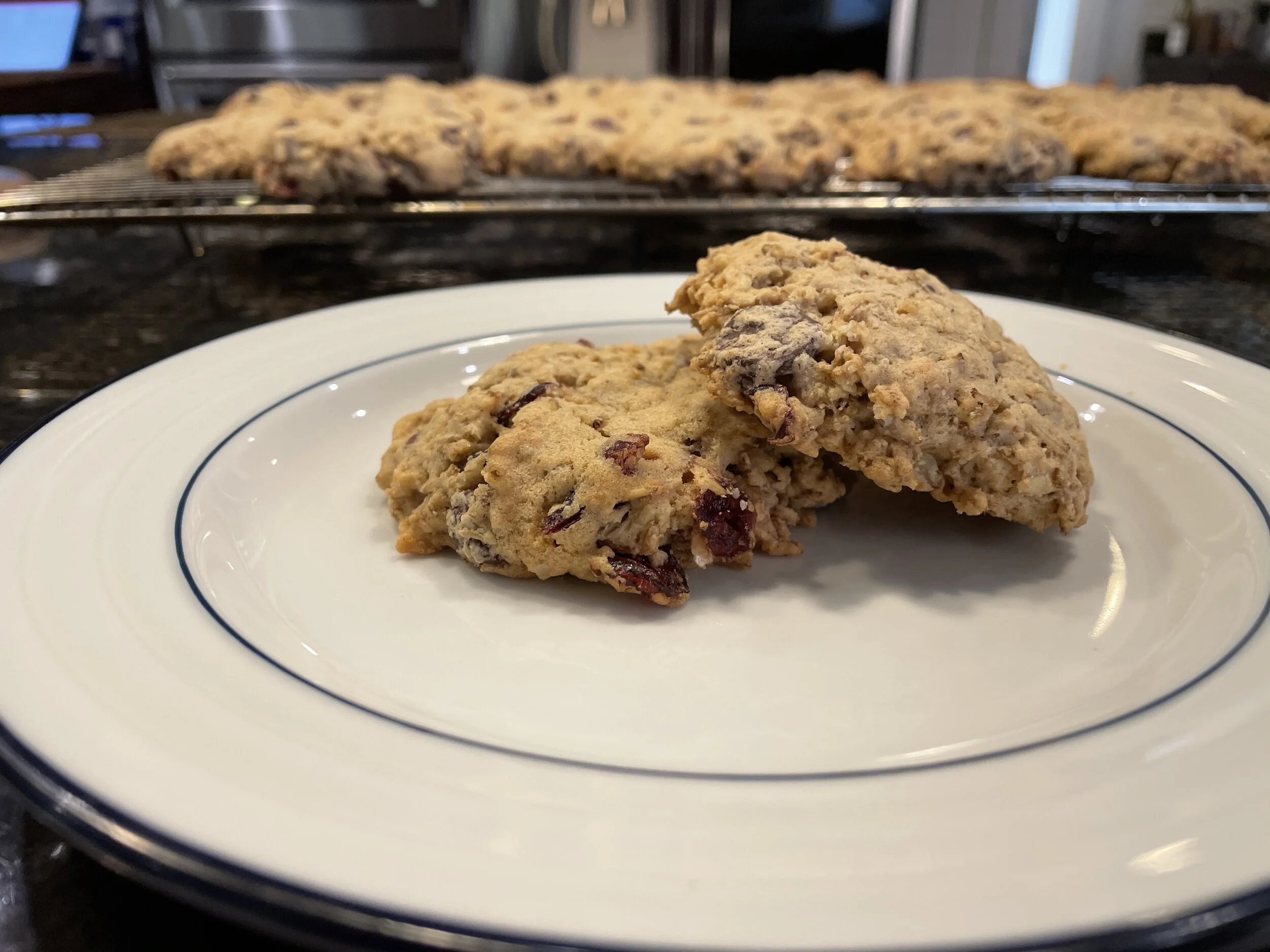Panettone
Nuts and Bolts:
Panettone is one of my favorite bread, even though it is a yeasted fruitcake. My then-boyfriend but now husband introduced me to this gourmet delight when we were first dating, and we eat it as a special treat during the holidays. Panettone is traditionally made in Italy during Christmas time. So, if you do not want to bake one, they are available in many grocery stores starting from November. Yet, I get a certain satisfaction when I learn to make a complex recipe. This bread is tough to master, and it took many tries to produce a delicious panettone. Some much so that I actually stopped making them altogether, as the ones I made in the past were tasteless, dry, and all the fruit ended up on the bottom. In a word, they were awful. Then 2020 came around, and I had time on my hands, and I finally mastered Panettone. This recipe is based on a recipe from King Arthur Baking Co. It is a two-day bake.
My thoughts on Panettone:
Panettone is an enriched dough, so it does take some practice to get it right,
This recipe works best if you use a scale to weigh out the ingredients in grams. This also includes weighing water.
This recipe can be made with just instant yeast, but it has a better texture if you use instant yeast and gold yeast.
Finally, I love the flavoring, Fiori Di Sicilia. I would wear it as perfume. It has any orangy and lemony flavoring the gives this bread a lovely but not so overpowering citrus flavor.
Method:
Day one: As late as you can in the evening, make the dough base; I like to do this around 9 pm.
Important tip: It is crucial to use instant yeast for this part. I made the mistake of using the gold yeast, and the sponge did not come out well.
So, weigh out 85g all-purpose flour, 1/16 teaspoon (just a pinch) instant yeast, and 74g of cool water. First, mix the flour and yeast in a medium-size bowl. Then add the water and mix together. Then cover the bowl with plastic wrap. And leave it out on the counter. If your yeast is good, it will start reacting right away.
This is the sponge after resting overnight; it will look pillowy and thick.
Day Two: You will need to measure and weigh out: 269g unbleached all-purpose flour, 57g lukewarm water, 2 large eggs, 57g of butter, softened 1/2 teaspoon of Fiori di Sicilia flavoring (1 teaspoon vanilla + 1/8 teaspoon orange oil), 2 1/4 teaspoons of SAF Gold instant yeast or 1 tablespoon instant yeast, 1/4 teaspoons of salt, and 67g of sugar.
Important tip: Weighing out water can be troublesome. It is necessary to weigh liquids in order to make an exemplary bread recipe. It is a tedious task, but it is worth it. This bread is difficult, but weighing almost all of the ingredients will ensure the best results.
Here is 57g of lukewarm water.
In a mixer fitted with a paddle, add the sponge and the water. I like to mix the water and sponge together for a few seconds; I find it helps get the sponge to mix more evenly in the dough. Then put in the eggs and butter and mix a little more. Add the sugar and flour together, then place the salt in a different area of the bowl. Next, make a well in the flour away from the salt to add the gold yeast. It is crucial to keep the salt and the yeast separate from one another in the bowl before mixing them. Slowly, start to mix the dough until just combined. Then switch to the hook tool and knead the dough until it’s a smooth and sticky dough. This is not a stiff dough because of all the egg, butter, and water in it. So, it can be tricky to work with at this stage. Carefully move the dough to a bowl greased with butter, then cover with plastic wrap and a towel. Place dough in a warm spot in the kitchen and let it rise for an hour to an hour and a half. It may not double in size, but it will be puffy when risen.
The bowl of all the dried fruit and zest mixed together.
While the dough is rising, I chop the fruit and weigh it out. You will need 85g of golden raisins, 64g of slivered dried apricots, 85g of dried cranberries, and 71g of dried pineapple in this recipe. After each fruit is weighed and cropped, I put then in a large bowl to be mixed. I zest two lemon and two oranges, which yields approximately two tablespoons. I am not that accurate with this measurement.
Important tip: I like to use both zest from an orange and lemon. It gives it more of a citrus flavor but experiment and sees what your family prefers.
Then add the zest to the bowl of dried fruit and combine until well mixed. This makes it easier to knead into the dough.
When the dough is proofed, deflate gently and place it on a floured surface. This next step takes some practice and a lot of trial and error to get right. The objective is to get the fruit mixed evenly throughout the dough; So, start by padding out the dough into a roughly rectangular shape. Then take about 1/4 of the fruit mixture and spread it out on the dough but keep the fruit in the middle of the dough, then start kneading it into the dough. Then recreate the rectangular shape, place about 1/4 of the fruit mixture onto the dough, and knead the fruit into the dough. I repeat until all of the fruit is mixed into the dough. Then shape the dough into a ball.
Important tip: When you stretch the dough to make the ball, some of the fruit will be exposed. That is ok. Just try to cover as much of the fruit as possible, so the fruit does not burn when baked.
This is the first of the dried fruit mixture being placed on the dough to be kneaded in. It does not need to be a perfect rectangle.
Place the dough in a panettone liner or panettone pan. If you do not have a panettone pan, you can use a souffle pan, and if you do not have a panettone liner put a round of parchment paper on the bottom of your pan. Put the dough or dough in a liner in the pan and let it rise for an hour or until it rises over the pan.
Here is a panettone in a liner in a souffle pan going in for its second rise.
Preheat an oven to 400°F while the bread is proofing for a second time. Baking Panettone is tricky, and I failed many times because it is easy to burn the bread and have it underbaked simultaneously. The way to avoid this is to follow the step-down temperature method of baking. Also, tenting the top of the bread with tin foil can prevent burning. Constantly checking on the bread can also prevent burning. When the bread has risen, place it in the 400°F oven for 10 minutes. When those 10 minutes are up, step down the temperature to 375°F let it bake for another 10 minutes. Then bring the temperature down to 350°F and bake from 25-35 minutes. When I turn the temperature down to 350°F, I see how brown the top of the bread is, and depending on how dark the bread is; I will tent it with some foil. Then I keep checking on the bread every 15 minutes or less. Once I think it is done, I get the bread out of the oven and take the bread’s internal temperature with a digital instant-read thermometer. It will be done if it reads 190°F at the center of the bread. Let it cool completely and enjoy!
Tenting the Panettone to prevent the top from burning
Final Thought:
This is a problematic bread to master, but it is worth a try; once you get it right, it is addictive. A loaf of this bread is gone in my house in a matter of hours; It also makes a very decadent French toast.
A fresh Panettone coming out of the oven.
Panettone:
Ingredients:
85g All-Purpose Flour
1/16 teaspoon (just a pinch) of instant yeast
74g of cool water
269g of unbleached all-purpose flour
57g of lukewarm water
2 large eggs
57g of butter; softened
1/2 teaspoon of Fiori di Sicilia flavoring or 1 teaspoon of vanilla + 1/8 of teaspoon orange oil
2 1/4 teaspoons of SAF Gold instant yeast or 1 tablespoon of instant yeast
1 1/4 teaspoons of salt
67g of sugar
85g of golden raisins
64g of slivered dried apricots
85g of dried cranberries
71g of chopped dried pineapple
About 2 tablespoons of grated orange rind and grated lemon rind (zest)
Directions:
Day one: Mix together the flour, instant yeast, and water in a medium-size bowl, cover, and leave it out on the counter overnight.
Day two:
In a mixer with a paddle, add the sponge and the water; mix for a few seconds. Then put in the eggs and butter, mix them until just incorporated. Then add the sugar, the flour, and the salt but make sure the salt is on one side of the bowl. Next, make a small well in the flour and add the yeast away from the salt. Then slowly start to mix the dough together until just combined. Then switch to the dough hook tool and knead the dough until smooth, but it will be sticky. Then move it to a bowl greased with butter, then cover with plastic wrap and towel and let it rise for an hour to an hour and a half. It may not double in size, but it will be puffy when risen.
While the dough is rising, chop and weigh the dried fruit and put it into a larger bowl to be mixed. Then add the zest of two lemons and two oranges and mix the fruit and zest until the zest is well dispersed into the fruit.
When the dough is proofed, deflate gently and place it on a floured surface. Make it a rectangular shape by flattening it out before starting to knead the fruit into it. Take about a ¼ of the fruit mixture and spread it out on the dough. Keep the fruit in the middle of the dough, then start kneading it into the dough. Then repeat until all of the fruit is mixed into the dough. Then shape the dough into a ball. Place it in a panettone liner or panettone pan. Put the dough or dough in a liner in the pan and let it rise for an hour or until it rises over the pan.
Preheat an oven to 400°F as the bread is proofing for a second time. When the bread has risen, place it in the 400°F oven for 10 minutes. When those 10 minutes are up, step down the temperature to 375°F let it bake for another 10 minutes. Then bring the temperature down to 350°F and check to see if the bread needs to be tented with tin foil. If it needs to be tented, tent it before continuing baking. Then bake for 25-35 minutes. Once the bread looks done, take it out of the oven and take the bread's temperature with a digital instant-read thermometer, it will be done if it read 190°F. Let it cool completely and enjoy!










